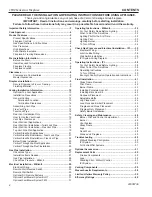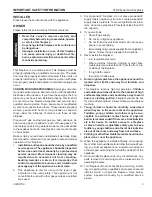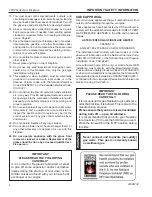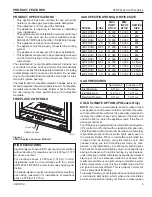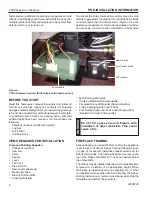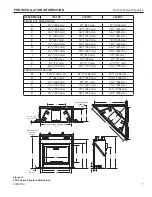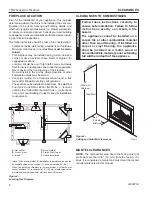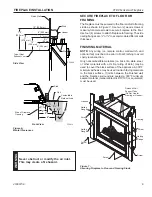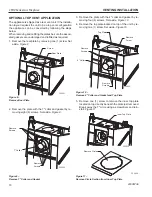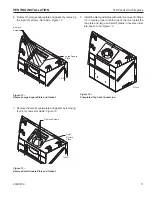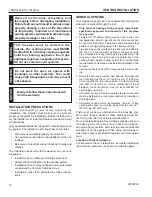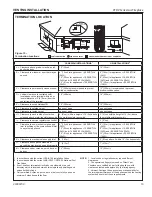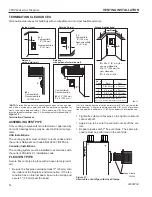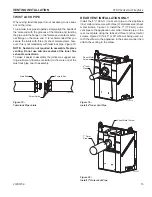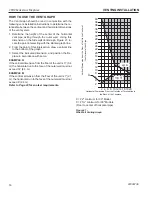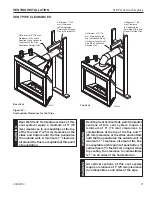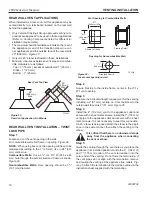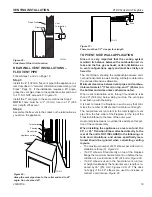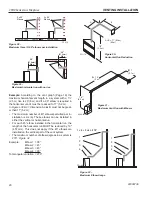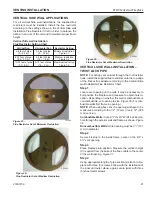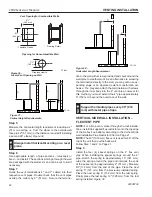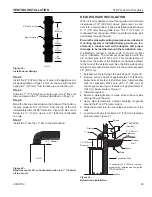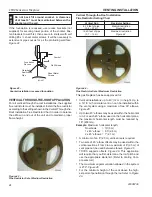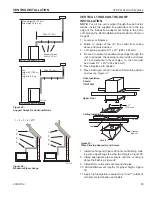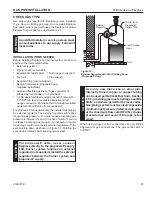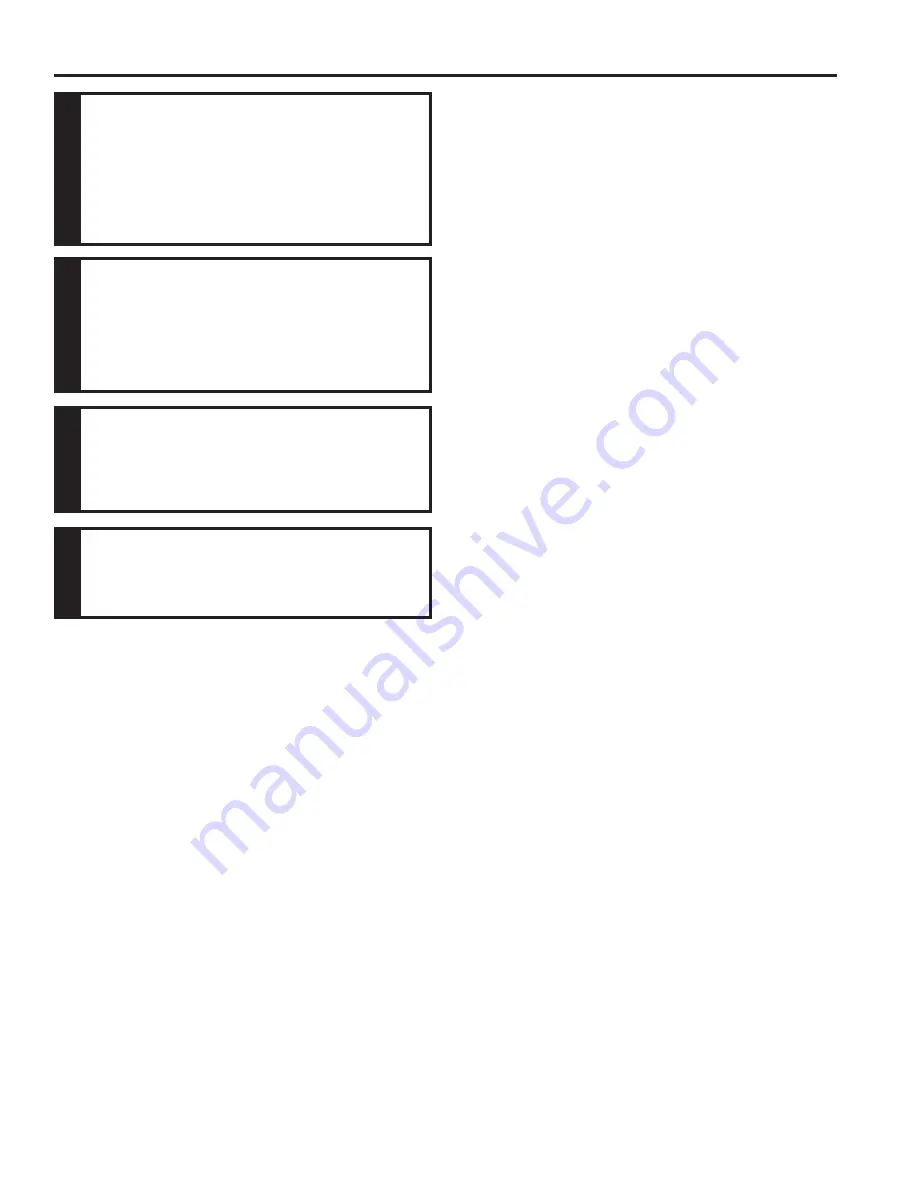
CFDV Series Gas Fireplace
12
20306739
INSTALLATION PRECAUTIONS
Consult local building codes before beginning the
installation. The installer must make sure to select the
proper vent system for installation. Before installing vent
kit, the installer must read this fi replace manual and vent
kit instructions.
Only a qualifi ed installer/service person should install vent-
ing system. The installer must follow these safety rules:
•
Wear gloves and safety glasses for protection.
•
Use extreme caution when using ladders or when on
rooftops.
•
Be aware of electrical wiring locations in walls and
ceilings.
The following actions will void the warranty on your vent-
ing system:
•
Installation of any damaged venting component.
•
Unauthorized
modifi cation of the venting system.
•
Installation of any component part not manufactured
or approved by Vermont Castings Group.
•
Installation other than permitted by these instruc-
tions.
VENTING INSTALLATION
W
ARNING
Read all instructions completely and
thoroughly before attempting installation.
Failure to do so could result in serious injury,
property damage or loss of life. Operation
of improperly installed and maintained
venting system could result in serious injury,
property damage or loss of life.
NOTICE
Failure to follow these instructions will
void the warranty.
Do not pack the open air spaces with
insulation or other materials. This could
cause high temperatures and may present
a fi re hazard.
W
ARNING
This fireplace must be vented to the
outside. The venting system must NEVER
be attached to a chimney serving a separate
solid fuel burning appliance. Each gas
appliance must use a separate vent system.
Do not use common vent systems.
W
ARNING
GENERAL VENTING
Your fi replace is approved to be vented either through the
side wall, or vertical through the roof.
•
Only Vermont Castings Group venting components
specifi cally approved and labeled for this fi replace
may be used.
•
Flexible UL1777 listed venting may be used in any vent-
ing application where rigid direct vent components can
be used. All restrictions, clearances and allowances that
pertain to the rigid piping apply to the fl exible venting.
Flex kits may not be modifi ed. Flex kits may be added to
the end of a vent run made of rigid vent sections using
pipe manufacturer's approved fl ex to pipe adapters. This
may occur only if doing so does not violate any of the
venting length, height, routing, horizontal to vertical ratio
requirements or clearance considerations detailed in this
manual.
•
Venting terminals shall not be recessed into a wall or sid-
ing.
•
Select the amount of vertical rise desired. All horizontal
run of venting must have 1/4" rise for every 12" (305 mm)
of run towards the termination below 7
1
/
2
feet of vertical
rise. With 7
1
/
2
feet (2.3 m) or more vertical rise off top of
fi replace, the horizontal run may run level. NEVER run
vent piping downward.
•
Horizontal venting which incorporates the twist lock pipe
must be installed on a level plane without an inclining or
declining slope.
•
Horizontal venting which incorporates the use of fl ex
venting shall have an inclining slope from the unit of 1"
(25 mm) per 24" (610 mm).
There must not be any obstruction such as bushes, gar-
den sheds, fences, decks or utility buildings within 24"
(610 mm) from the front of the termination hood.
Do not locate termination hood where excessive snow or
ice build up may occur. Be sure to check vent termina-
tion area after snow falls, and clear to prevent accidental
blockage of venting system. When using snow blowers,
make sure snow is not directed towards vent termination
area.
Location of Vent Termination
It is imperative the vent termination be located observing
the minimum clearances as shown on following page.


